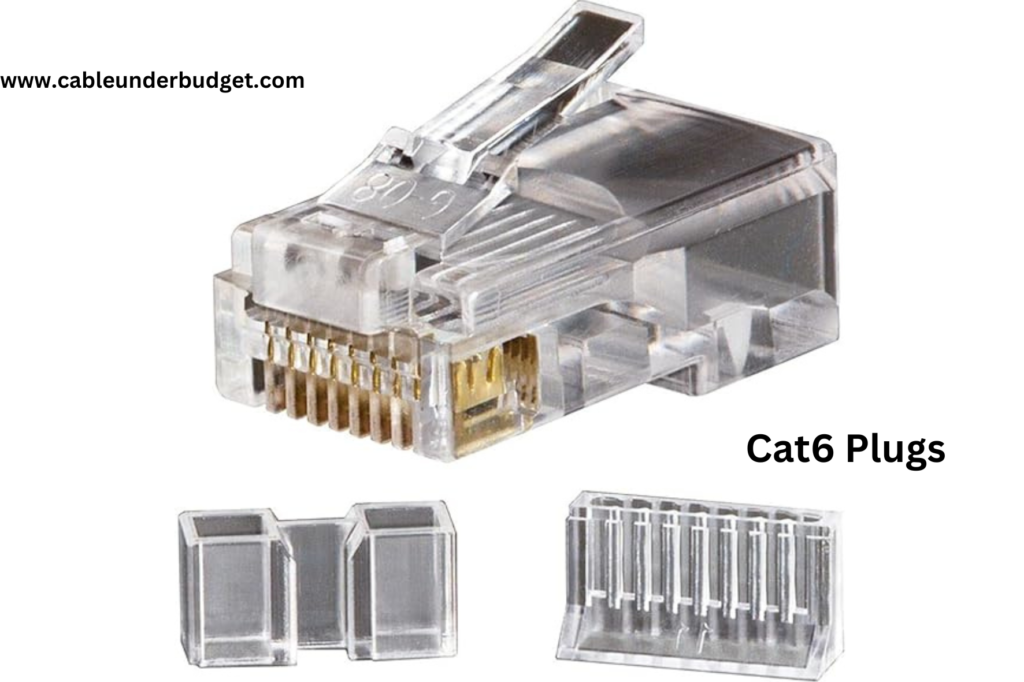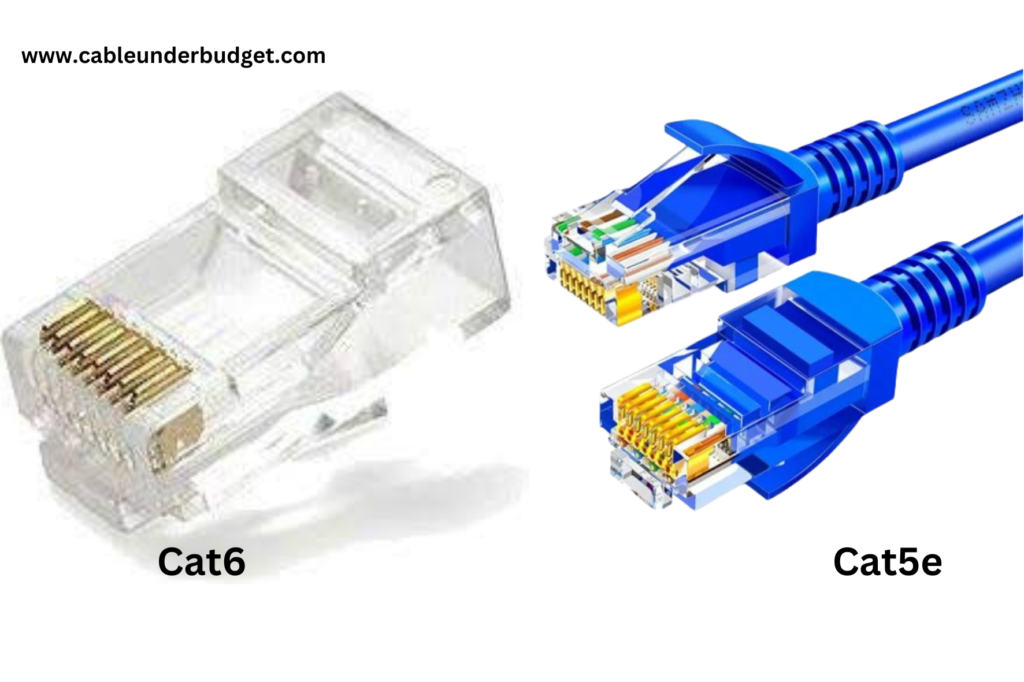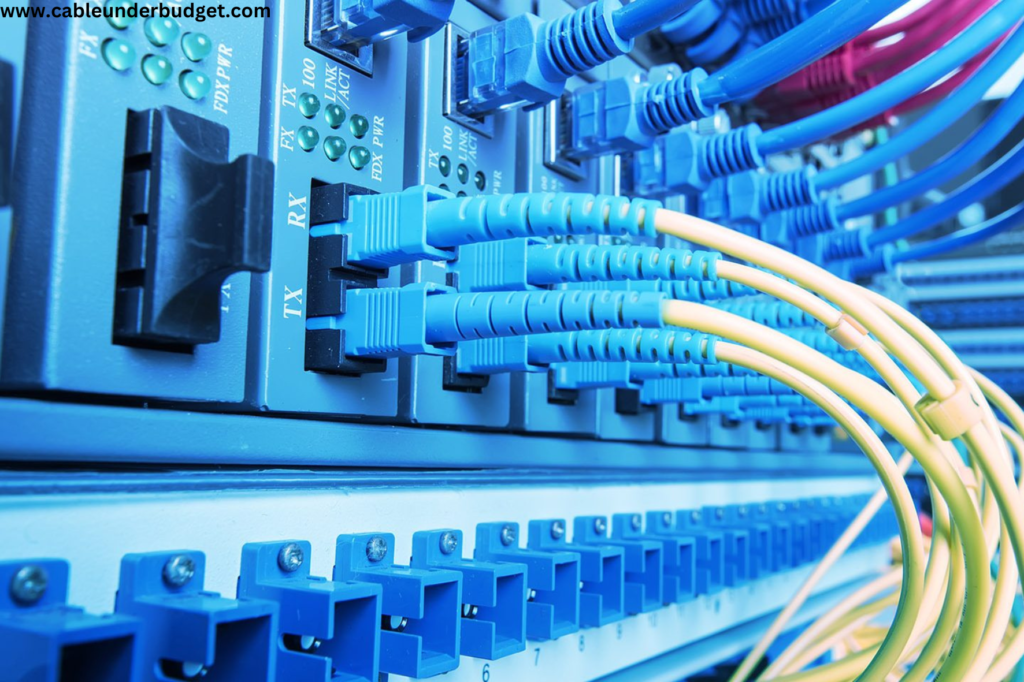Contents
Difference Between Cat5e and Cat6 Plugs
In today’s rapidly advancing technological landscape, the need for efficient and reliable networking solutions has never been more pronounced. As businesses and individuals alike rely on seamless connectivity for their daily operations and activities, the choice between Cat5e and Cat6 plugs emerges as a critical consideration. But what exactly sets these two apart, and which one is the optimal choice for your networking needs? Let’s delve into the intricacies of Cat5e and Cat6 plugs to gain a comprehensive understanding.
Cat5e Plugs: Unveiling the Legacy
Cat5e, short form of Category 5e, stands as a stalwart in the realm of networking infrastructure. It represents an evolution from its predecessors, offering enhanced performance and reliability over conventional Cat5 cables. The “e” in Cat5e signifies “enhanced,” underscoring its improved capabilities compared to its predecessor.

Features of Cat5e Plugs
- Speed and Bandwidth: Cat5e plugs are capable of supporting data transfer speeds of up to 1 Gigabit per second (Gbps), making them suitable for most residential and small to medium-sized business applications. With a bandwidth capacity of 100 MHz, Cat5e cables can accommodate high-speed data transmission with minimal latency.
- Compatibility: One of the notable advantages of Cat5e plugs is their backward compatibility with older networking standards, including Cat5. This ensures seamless integration into existing network infrastructures, making Cat5e a cost-effective solution for network upgrades and expansions.
- Cost-Effectiveness: Cat5e cables are widely available and relatively affordable, making them an attractive option for budget-conscious consumers and businesses seeking reliable networking solutions without breaking the bank.
- Versatility: From home networking setups to small office environments, Cat5e plugs excel in a variety of applications, ranging from internet browsing and video streaming to file sharing and online gaming.
Cat6 Plugs: Pioneering Performance
Cat6, the successor to Cat5e, raises the bar in terms of performance and efficiency. Engineered to meet the demands of modern networking environments, Cat6 plugs deliver unparalleled speed, reliability, and scalability, making them the preferred choice for high-bandwidth applications.

Advancements Offered by Cat6 Plugs
- Enhanced Performance: Cat6 cables are designed to support data transfer speeds of up to 10 Gbps over short distances, making them ideal for bandwidth-intensive tasks such as high-definition video streaming, cloud computing, and large file transfers.
- Superior Shielding: Unlike Cat5e cables, which typically feature unshielded twisted pair (UTP) construction, Cat6 cables often incorporate shielded twisted pair (STP) or foiled twisted pair (FTP) shielding to minimize electromagnetic interference (EMI) and crosstalk, ensuring reliable data transmission in demanding environments.
- Future-Proofing: With its robust construction and higher performance capabilities, Cat6 offers a future-proof solution for organizations looking to invest in long-term networking infrastructure. By anticipating the evolving needs of modern technology, Cat6 plugs provide a solid foundation for scalable and high-speed network deployments.
Making the Choice: Cat5e vs Cat6 Plugs
When it comes to selecting between Cat5e and Cat6 plugs, the decision ultimately hinges on your specific requirements, budget constraints, and long-term objectives. While Cat5e remains a viable option for basic networking needs and cost-sensitive projects, Cat6 emerges as the go-to solution for businesses and individuals seeking uncompromising performance and scalability.

Key Considerations for Decision-Making
- Budget: If cost-effectiveness is a primary concern and your network demands fall within the capabilities of Cat5e, opting for Cat5e plugs may suffice while keeping expenses in check.
- Performance Requirements: For bandwidth-intensive applications or environments where future scalability is crucial, investing in Cat6 plugs offers a forward-looking solution that can accommodate evolving technology trends and network demands.
- Compatibility: Assessing the compatibility of your networking equipment and infrastructure with both Cat5e and Cat6 standards can help streamline the decision-making process and ensure seamless integration.
Conclusion
In conclusion, the choice between Cat5e and Cat6 plugs boils down to a balance between performance, cost, and future scalability. By understanding the distinct features and capabilities of each option, you can make an informed decision that aligns with your networking objectives and business needs.
FAQs
What is the main difference between Cat5e and Cat6 plugs?
Can I use Cat5e plugs instead of Cat6, or vice versa?
Which one is better for gaming and streaming: Cat5e or Cat6?
Are Cat6 plugs backward compatible with Cat5e cables?


Pingback: Cable vs. Fiber-Optic Internet | Which is the Better Choice? 1